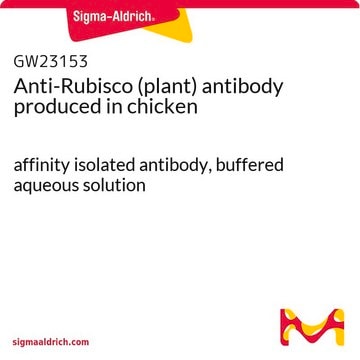83895
D-Ribulose 1,5-bisphosphate sodium salt hydrate
≥99.0% (TLC)
Sinónimos:
D-erythro-2-Pentulose, 1,5-bis(dihydrogen phosphate), D-Ribulose 1,5-diphosphate, RuDP
About This Item
Productos recomendados
Ensayo
≥99.0% (TLC)
Formulario
powder
color
white
solubilidad
H2O: 50 mg/mL, clear, colorless to light yellow
temp. de almacenamiento
−20°C
cadena SMILES
[P](=O)(OC[C@@H](O)[C@@H](O)C(=O)CO[P](=O)(O)O)(O)O
InChI
1S/C5H12O11P2/c6-3(1-15-17(9,10)11)5(8)4(7)2-16-18(12,13)14/h3,5-6,8H,1-2H2,(H2,9,10,11)(H2,12,13,14)/t3-,5-/m1/s1
Clave InChI
YAHZABJORDUQGO-NQXXGFSBSA-N
¿Está buscando productos similares? Visita Guía de comparación de productos
Aplicación
Otras notas
Código de clase de almacenamiento
11 - Combustible Solids
Clase de riesgo para el agua (WGK)
WGK 3
Punto de inflamabilidad (°F)
Not applicable
Punto de inflamabilidad (°C)
Not applicable
Equipo de protección personal
Eyeshields, Faceshields, Gloves, type P2 (EN 143) respirator cartridges
Elija entre una de las versiones más recientes:
¿Ya tiene este producto?
Encuentre la documentación para los productos que ha comprado recientemente en la Biblioteca de documentos.
Los clientes también vieron
Nuestro equipo de científicos tiene experiencia en todas las áreas de investigación: Ciencias de la vida, Ciencia de los materiales, Síntesis química, Cromatografía, Analítica y muchas otras.
Póngase en contacto con el Servicio técnico













